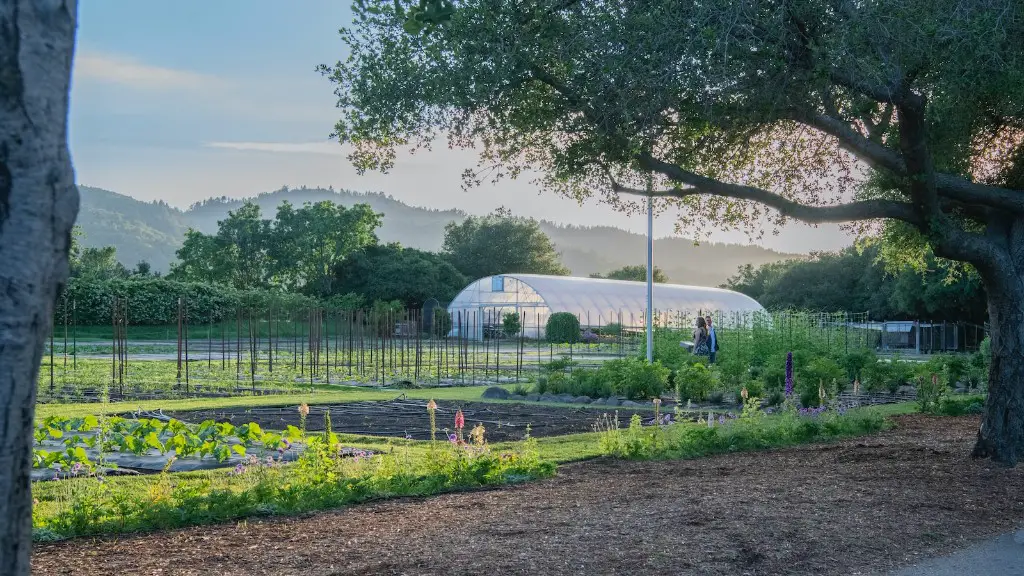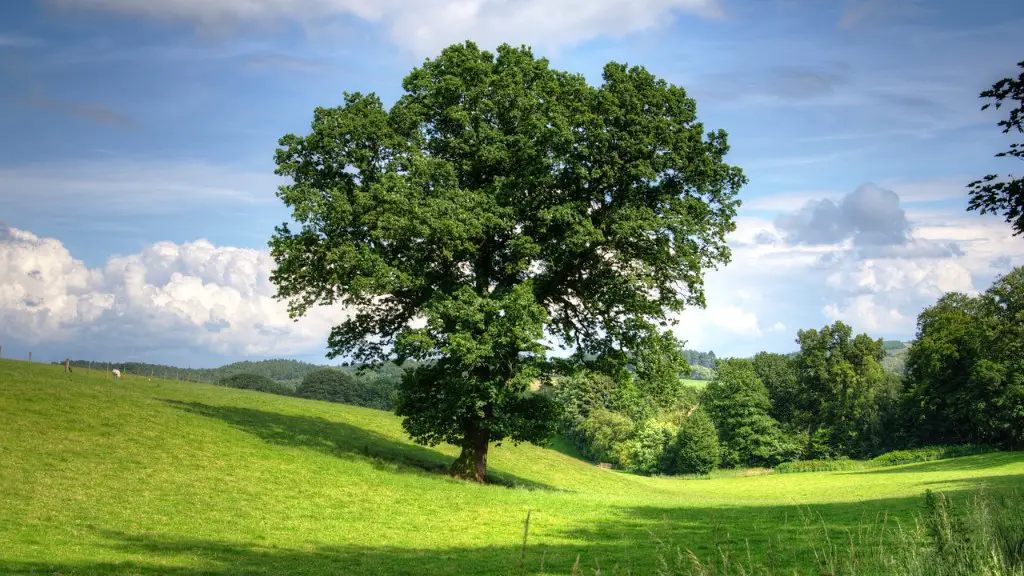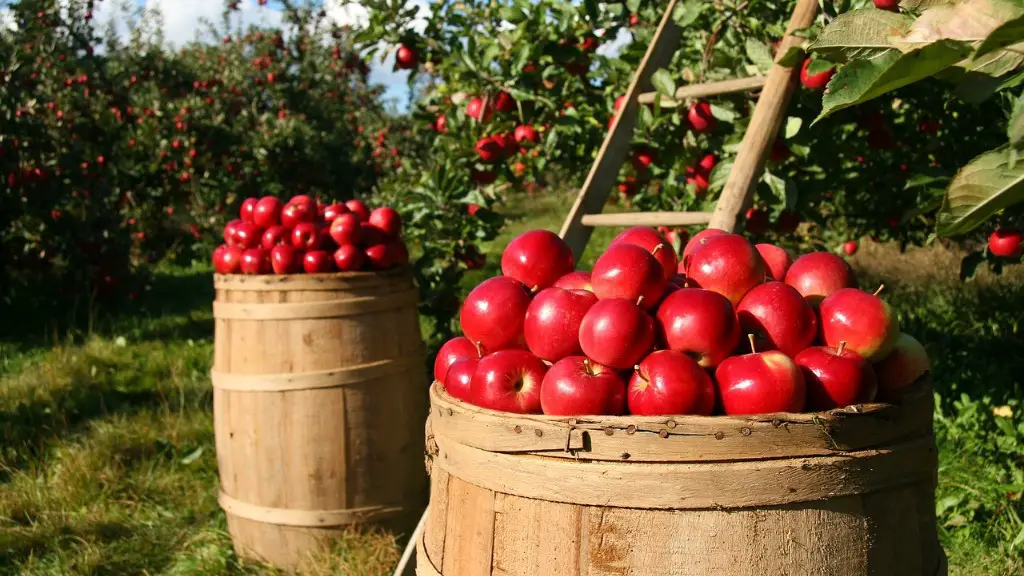Agricultural value chain development is the process of creating economic linkages and improving production and marketing systems within and between agricultural value chains. It is a process that can help to create more efficient and equitable value chains, and can be an important tool for poverty reduction and rural development.
Value chain development in agriculture is the process of adding value to agricultural products through the various stages of production, processing and marketing. Value chain development can help smallholder farmers to increase their incomes by ensuring that they receive a fair share of the value generated from the sale of their crops. It can also help to create employment opportunities and support the development of rural infrastructure.
What is the agricultural value chain?
An agricultural value chain is defined as the people and activities that bring a basic agricultural product like maize or vegetables or cotton from obtaining inputs and production in the field to the consumer, through stages such as processing, packaging, and distribution.
The main players in an agricultural value chain are farmers, input suppliers, processors, packagers, distributors, and retailers. Each player has a different role to play in bringing the product to the consumer.
Farmers are the primary producers of agricultural products. They obtain inputs like seeds, fertilizer, and water from suppliers and produce the crops in their fields.
Processors purchase agricultural products from farmers and add value to them through activities like cleaning, sorting, and packaging.
Packagers package the processed products in containers like bags or boxes.
Distributors transport the packaged products to retailers.
Retailers sell the products to consumers.
Agricultural value chains can be very complex, with many different players involved. However, understanding the different roles that each player plays is essential to ensuring that the products reach the consumer in a safe and timely manner.
The value chain is a key concept in understanding the competitiveness of firms and the dynamics of industries. It is also a useful tool for identifying the sources of value creation and for diagnosing the relative competitiveness of firms. The value chain can be decomposed into a series of value-adding activities, which can be broadly grouped into three categories:
1. Primary activities, which include activities such as R&D, design, manufacturing, and marketing;
2. Support activities, which include activities such as logistics, human resources, and information technology; and
3. Firm infrastructure, which includes activities such as accounting, legal, and general management.
What is the importance of value chain development
The value chain approach is a way of thinking about how businesses can work together to create value for customers and generate wealth for all involved. The goal is to create a “virtuous circle” in which businesses are constantly innovating and improving to stay ahead of the competition, while also working together to support each other. This approach can be applied to any industry or sector, and can be used to help identify new opportunities for growth.
The value chain is a very important concept in the agricultural industry, as it encompasses all of the different steps and processes involved in getting a product from the farm to the consumer. By understanding the value chain, businesses can identify where they fit in and what they need to do to add value to the product. Additionally, businesses can use the value chain to identify potential areas of improvement and to create a more efficient and effective operation.
What is the benefit of value chain in agriculture?
The global value chains (GVCs) are a great way to connect producers of food and fibre to consumers across the world. They help deliver stable supplies of food and textiles along with greater choice to consumers, and at the same time generate incomes for producers.
High value chains can contribute to food security in the dimensions of access, availability and quality of food primarily by the increase of production volumes, farm diversification, generating higher incomes, reducing postharvest losses, and upgrading technologies to use more efficiently natural resources and .
What is value chain in simple words?
The term value chain refers to the various business activities and processes involved in creating a product or performing a service. A value chain can consist of multiple stages of a product or service’s lifecycle, including research and development, sales, and everything in between. A company’s value chain is the sum of all the processes and activities that it takes to create and sell a product or service.
The term was coined by Michael Porter in his 1985 book, “Competitive Advantage: Creating and Sustaining Superior Performance.” Porter identified a company’s primary activities as being either direct or indirect. Direct activities are those that are directly involved in the creation or sale of a product or service, such as marketing, sales, and customer service. Indirect activities are those that are not directly involved in the creation or sale of a product or service, but are necessary for the company to function, such as accounting, HR, and IT.
The value chain is a crucial tool for companies to understand where they can create the most value for their customers. By identifying the value-creating activities in their value chain, companies can focus on improving these activities to create a competitive advantage.
A value chain is a sequence of activities that a company performs in order to create value for its customers. The term was first popularized by Michael Porter in his 1985 classic, Competitive Advantage: Creating and Sustaining Superior Performance.
A simple example of a value chain is shown below:
Value Chain Analysis Example
For example, McDonald’s mission is to provide customers with low-priced food items. The analysis helps McDonald’s identify areas for improvement and activities that add value to their products and services.
McDonald’s Value Chain
The value chain for McDonald’s can be divided into the following main activities:
1. Procurement: McDonald’s purchases raw materials and supplies from its suppliers.
2. Manufacturing: McDonald’s transforms the raw materials into finished products.
3. Marketing and Sales: McDonald’s sells the finished products to its customers through its restaurant locations.
4. Customer Service: McDonald’s provides customer service to its customers through its restaurant locations.
5. Maintenance and Repair: McDonald’s maintains and repairs its restaurant locations.
What is the main goal of value chain
The overarching goal of a value chain is to deliver the most value for the least cost in order to create a competitive advantage. In order to achieve this goal, a company must carefully manage each link in the chain and align it with their business strategy. By doing so, a company can optimize their value chain to drive efficiencies and minimize costs.
Value education is an important aspect of schooling that helps students to become more responsible and sensible citizens. It helps them to understand the perspective of life in a better way and to lead successful lives as responsible members of society. Value education also helps students to develop strong relationships with family and friends.
What are the 5 primary activities of a value chain?
Porter’s value chain is a model that analyses the internal activities a company uses to create value for its customers. The model is split into five primary activities: inbound logistics, operations, outbound logistics, marketing and sales, and service. There are also support activities, which are illustrated in a vertical column over all of the primary activities. These are procurement, human resources, technology development, and firm infrastructure.
The model is useful for companies to understand where they can create value for their customers, and where they may be able to improve their own operations. It can also help companies to identify which activities are most important to their customers and where they should focus their efforts.
An agricultural value chain is a system of linked activities and organizations that starts with the development and dissemination of plant and animal genetic material and involves all stages of production and marketing of farm products. Farmer organizations, input supply, farm production, post-harvest handling, processing, provision of technologies of production and handling, grading are some of the activities included in a value chain.
Who are value chain actors in agriculture
The agrifood system is a complex web of actors and activities that brings food from farm to fork. This includes larger-scale producers, smallholders, input suppliers, traders, processors, transporters, wholesalers, retailers, and finally, consumers. Each actor in the system plays a vital role in ensuring that food is produced, processed, and transported safely and efficiently.
1. India’s farm resources like land, water, and soil health are under immense stress due to scarcity. More than half the country faces water stress with withdrawals at 40 to 80 percent of the available supply.
2. The average size of landholdings in India is very small, making it difficult for farmers to invest in expensive farm machinery or adopt new technology.
3. India is highly dependent on monsoon rains for agriculture, making it vulnerable to weather extremes and natural disasters.
4. There is a lack of storage and refrigeration facilities in India, leading to wastage of perishable farm produce.
5. There is a lack of credit and insurance options for farmers, making them vulnerable to financial risks.
What are the five components of a value chain?
The value chain framework is a tool that can be used to analyze a company’s competitive advantage. The framework is made up of five primary activities — inbound operations, operations, outbound logistics, marketing and sales, service — and four secondary activities — procurement and purchasing, human resource management, technological development and company infrastructure.
The inbound operations activity includes activities such as supplier management, logistics, and warehousing. The operations activity includes activities such as production, quality control, and packaging. The outbound logistics activity includes activities such as order fulfillment and delivery. The marketing and sales activity includes activities such as product promotion and customer service. The service activity includes activities such as installation and repair.
The procurement and purchasing activity includes activities such as supplier selection and negotiation, and the human resource management activity includes activities such as training and development. The technological development activity includes activities such as research and development. The company infrastructure activity includes activities such as accounting and finance, and legal and compliance.
The value chain is a process in which a company adds value to its raw materials to produce products eventually sold to consumers. The value chain includes all the steps required to get the product to the customer, including sourcing the raw materials, manufacturing the product, and selling and shipping the product. The supply chain is a subset of the value chain that includes only the steps required to get the product to the customer.
What are the steps in the value chain
The term “value chain” was first coined by Michael Porter in his classic 1979 book, “Competitive Strategy.” A value chain is a series of activities that a firm carrying out in order to create value for its customers. The concept of the value chain is based on the idea that the value of a product or service lies not only in its final form but also in the processes and activities that are carried out to create it.
There are three main steps in value chain analysis:
1. Identify the main functions and types of firms in the value chain.
2. Analyze structural connections.
3. Analyze dynamics.
The first step is to identify the main functions that are carried out in the value chain and the types of firms that carry them out. The second step is to analyze the structural connections between the different firms in the value chain. The third and final step is to analyze the dynamics of the value chain, including the impact of changes in technology and consumer behavior.
A value chain is a series of activities that a company uses to create a product or service. The term was coined by Michael Porter in his 1985 book, “Competitive Advantage: Creating and Sustaining Superior Performance.”
The value chain is also known as a value stream. A value stream is a view of all the work required to bring a product or service from idea to delivery. The value stream includes all the steps from concept to customer.
The primary activities in the value chain are those that create value for the customer. These are the activities that the customer is willing to pay for. The secondary activities are those that support the primary activities. They don’t create value for the customer, but they are necessary for the primary activities to take place.
Labeling each activity will help you to see how it creates value. For example, if you are a manufacturer, your primary activities might include research and development, production, and marketing. Your secondary activities might include accounting, human resources, and legal.
Adding the cost of each activity will help you to identify areas where you are wasting money. For example, if you are spending a lot of money on advertising but not getting many sales, you might want to rethink your marketing strategy.
Conclusion
Value chain development in agriculture is the process of creating new value chains or improving existing ones in the agricultural sector. It involves the identification of new opportunities for creating value, the development of new business models and the improvement of existing value chains.
Value chain development in agriculture is the process of creating value for farmers and other stakeholders involved in the production, processing, and distribution of agricultural products. It includes the development of efficient and effective production and post-production systems, the establishment of market linkages, and the provision of technical and financial services. Value chain development can lead to increased incomes and improved livelihoods for small-scale farmers and other stakeholders involved in the agriculture sector.




